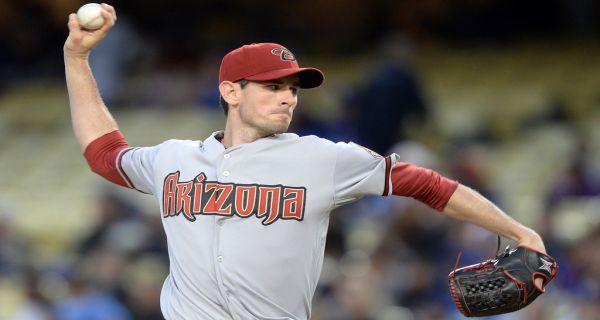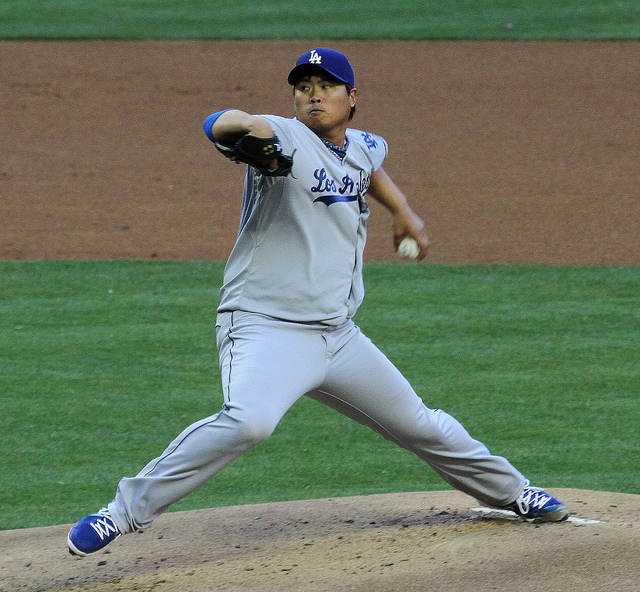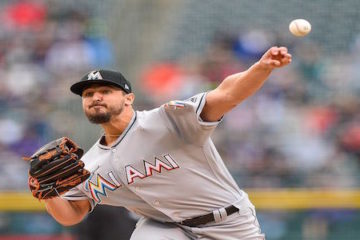2014 Fantasy Baseball: Don’t Strand So Close To Me

We’re finishing the first quarter of the season, and it’s easier to understand some of our buy and sell opportunities as fantasy team owners than it was back in April. Late last week I wrote about starting pitchers to sell and you can find that here. Today I want to take a look at a few starters that I feel are worth your attention. Depending on their level of ownership, these are pitchers that I’m looking to add, acquire in a deal, or in some cases hold despite the appearance of a rocky start to 2014. I’m going focus on strand rates, or Left On Base (LOB%), and show you how to use some easy to understand advanced metrics to sniff out the discounts. You can find me on twitter, @RyNoonan and I’d be happy to answer any player specific question.
Before we get started, how about we walk through a little strand rates 101. LOB%, as you may have guessed, measures the percentage of base runners that a pitcher strands on base over the course a given time period. This stat does not use the left on base numbers reported in box scores, but instead is calculated using a pitcher’s actual hits, walks, and runs allowed results. If you hate math, scroll down:
LOB% = (H+BB+HBP-R)/(H+BB+HBP-(1.4*HR))
Most pitchers have LOB percentages around league average (which is approximately 70-72%, but that varies slightly from year to year), and pitchers that deviate from the average tend to see their numbers regress towards the mean in the future. In other words, if you see a pitcher with a 60 LOB%, they are letting a lot of runners score so their ERA will be high (Brandon McCarthy, for example). But the odds are that they will strand more runners in the future and lower their ERA. Extreme variances from the major league average can be interpreted as luck taking effect, but it’s just as likely that bullpen support, defense, or a pitcher’s natural tendency is responsible.
A pitcher’s comfort level with the windup versus the stretch can impact his strand rate as well. It’s important to note that not all pitchers will regress toward league-average, though: high strikeout pitchers have been shown to have some control over their LOB% (Stephen Strasburg, anyone?). Pitchers that record a high numbers of strikeouts can pitch their way out of jams more easily than pitchers that rely upon their team’s defense, so they are able to maintain LOB%s higher than league average.
Also, if a pitcher is replacement level, it’s likely that their true-talent LOB% is below league average, probably in the 65-68% range. Missing bats is a huge piece to this equation. By using LOB% in conjunction with others stats, specifically BABIP and HR/FB, it’s possible to get an idea of if a pitcher is under or over-performing. The ERA/FIP differences are also telling, and for more information on how to leverage that check out Alan Harrison’s piece from a couple weeks back. Let’s take a look at some guys that have some brighter days ahead.
Brandon McCarthy, SP Arizona Diamondbacks
| LOB% | K% | GB% | K/BB | BABIP | HR/FB | ERA/FIP |
| 59.6% | 22.2% | 54.1% | 5.20 | .301 | 21.4 | 5.01/3.85 |
It’s hard to see a pitcher on the waiver wire with a 5.00+ ERA and call him an ‘add’, but I’ll try to make a case here for McCarthy. Truth be told, it isn’t all that difficult to do. Brandon McCarthy has yet again reinvented himself. He’s like the Robert Downey Jr. of baseball. The intentional focus on becoming a ground ball pitcher while in Oakland has only continued for McCarthy in the Arizona desert, but something that’s more directly appealing to fantasy owners has followed as well, strikeouts. So far in 2014, McCarthy is striking out a career high 22.2% of the batters he’s faced, which is up from just 13.2% last season. Each of his four pitches (he’s completely gone away from his change-up) have seen an uptick in whiffs, and his overall SwStk% of 8.5% is the highest he’s seen since 2006.
He was electric in his last start against vs. the Nationals. His fastball, sinker and cutter were each up nearly two mph vs. his early season starts, including the shellacking he took against Colorado in April that skewed his numbers. The three homers he gave up there inflated his HR/FB ratio. Due in part to the lack of strikeouts, McCarthy has always carried a less than elite strand rate, just 70.4% for his career, but regardless of a pitcher’s ‘stuff’, 59.6% is unlucky. With the improved velocity and extreme ground ball tendencies, McCarthy is worth a look.
Travis Wood, SP Chicago Cubs
| LOB% | K% | GB% | K/BB | BABIP | HR/FB | ERA/FIP |
| 64.8% | 20.5% | 37.3% | 2.93 | .331 | 6.7 | 4.91/3.52 |
The numbers above were gathered on Sunday, before Wood started against the Brewers, where he was sharp at home. He struck out seven Brewers over seven innings of work, giving up just two hits and two walks. He isn’t nearly the ground ball pitcher that Brandon McCarthy is, but he’s trending in a positive direction versus his career numbers. Another good sign here for Wood is that his strikeouts are up and the walks are down. He’s much more likely to be 3.50 ERA pitcher than a nearly 5.00 ERA pitcher as his FIP shows. When his LOB% stabilizes, we’ll see a player that’s worth a roster spot in even the shallowest of leagues.
Stephen Strasburg, SP Washington Nationals
| LOB% | K% | GB% | K/BB | BABIP | HR/FB | ERA/FIP |
| 68.3 | 30.0% | 49% | 4.67 | .371 | 10.0 | 3.48/2.34 |
Yes, an obvious name, but it’s important to note what’s going on here with Strasburg. The strikeout rate is back up after taking a bit of a dip last season, and his SwStk% is sitting at 12.7%, a career high. Elite strikeout guys like Strasburg have no business having a 68.3% strand rate, as he’s a mid 70’s guy for his career. He’s showing improved control overall, but he’s getting crushed in the zone more than ever. His LD%-against is driving that high BABIP total, but I trust the skill set here. There’s no noteworthy dip in velocity that’s alarming, and if anything, the 4.67 K/BB (up from 3.41 last season) tells me he’s on the right track. Commanding the fastball in the zone is the thing to watch here, but I think a healthy Strasburg is a top five starting pitcher and someone to target if his owner is looking to sell.
Corey Kluber, SP Cleveland Indians
| LOB% | K% | GB% | K/BB | BABIP | HR/FB | ERA/FIP |
| 69.0 | 26.4% | 47.6% | 5.08 | .353 | 5.9 | 3.38/2.21 |
What’s not to love here? There’s even a Corey Kluber Society of overzealous fans! I’m glad I didn’t start a Danny Salazar Society in March. Woof. That would be a lonely, lonely meeting right now. Kluber hasn’t been quite as strand-rate-bitten as some of the previous pitchers, but when you factor in his BABIP and sky-rocketing K-rate, it’s clear that despite the strong start, he’s been unlucky in 2014. The more he stays away from his fastball, the better off he’ll be, as his curve, change-up and slider all have above average whiff rates. As good as he’s been, the general lack of name recognition makes him an intriguing buy for savvy owners.
Follow Ryan on Twitter, @RyNoonan. You can also hear Ryan once a week on ‘Caught Looking-The Fantasy Baseball Podcast’ for TheFantasyReport.net





